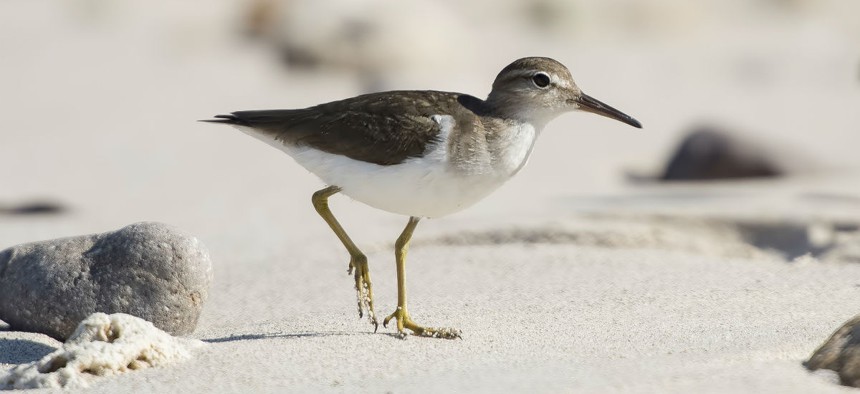Interagency Collaboration—For the Birds
Federal agencies, academics and nonprofits flock together to help migratory birds.
North America’s migratory bird population—whose delicate health is seen as threatened by climate change—has a tendency to choose flyways without regard to state and international borders.
Hence protecting migratory birds requires an intricate collaboration of federal agencies, academics and nonprofits from three countries. Many of those groups gathered May 18 at the Canadian Embassy in Washington to bestow multinational awards and release the first ever report on the state of North American migratory birds.
Compiled for the 100th anniversary of the U.S.-Canada Migratory Bird Treaty, the report, noted the U.S. Fish and Wildlife Service, is the first comprehensive assessment of the conservation status of all bird species that occur in Canada, the continental United States and Mexico.
“Where bird populations are dropping, the lands and waters that sustain us are stressed,” the report read.
“This report shows that more than one-third of all North American bird species need urgent conservation action and calls for a renewed, continent-wide commitment to saving our shared birds and their habitats,” FWS said. “It is a call to action to governments, private industry and the public to come together to support a beloved shared resource.”
From Ottawa, a session of the Canada-Mexico-U.S. Trilateral Committee was livestreamed featuring remarks from FWS Director Daniel Ashe, Canadian Environment and Climate Change Minister Catherine McKenna and a top ornithologist from the Mexican government.
Back in Washington, bottles of local wine and award certificates were presented to officials from the Forest Service, the Defense Department, the Bureau of Land Management, the U.S. Geological Survey and the Smithsonian. Representatives from nonprofits such as Environment for the Americas, Ducks Unlimited and Nature Canada also attended.
For that day, at least, all were flocking together.




